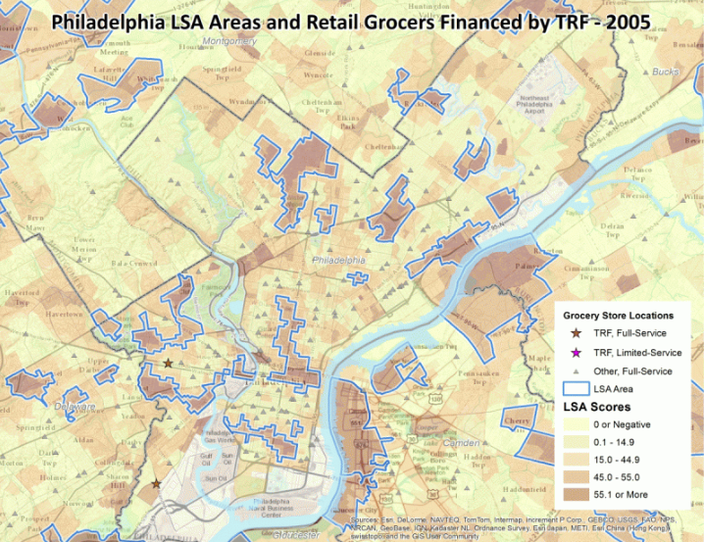Over the past decade, numerous studies and maps have been analyzed to determine where investment should be prioritized to broaden access to grocery stores in Philadelphia.
According to a new report from the Philadelphia-based Reinvestment Fund, which monitors data on food access trends, there have been substantial decreases in "limited supermarket access (LSA)," specifically in North and West Philadelphia,
Next City reports.
TRF, a community development financial institution, used the study as an opportunity to assess the progress of its own investment arm, which pumped $74 million toward full- and limited-service grocers in the Philadelphia metro area between 2005 and 2013. Much of that investment was in partnership with the Food Trust for the
Pennsylvania Fresh Food Financing Initiative.
Despite a focus on high-quality housing development in the early part of the last decade, there wasn't corresponding growth to keep pace with the amenities needed to make communities livable and healthy.
The two maps below graphically represent the 56 percent decrease in LSA between 2005-2013, counting only those supermarkets with more than $2 million in annual sales (the reason being that these are considered locations that consistently provide both variety and affordability).
TRF's study found that full-service grocery stores in Philadelphia increased by 48 percent in the relevant timeframe, part of a larger statewide initiative that added 88 fresh food retail projects in Pennsylvania. Overall, 5,000 jobs were created or retained throughout the state.
According TRF CEO Don Hinkle-Brown, the main barriers to urban investment have been concerns about workforce development and community spending power. While these issues haven't deterred expansion in suburban areas, Hinkle-Brown said the bias against cities has not been based on data.
Though there remain some pockets of LSA in Philadelphia, Hinkle-Brown said the results of the study were highly encouraging and that the progress here has allowed TRF to expand its loan services to Baltimore, New Jersey and other locations in comparative need.

 Stock/AP
Stock/AP

